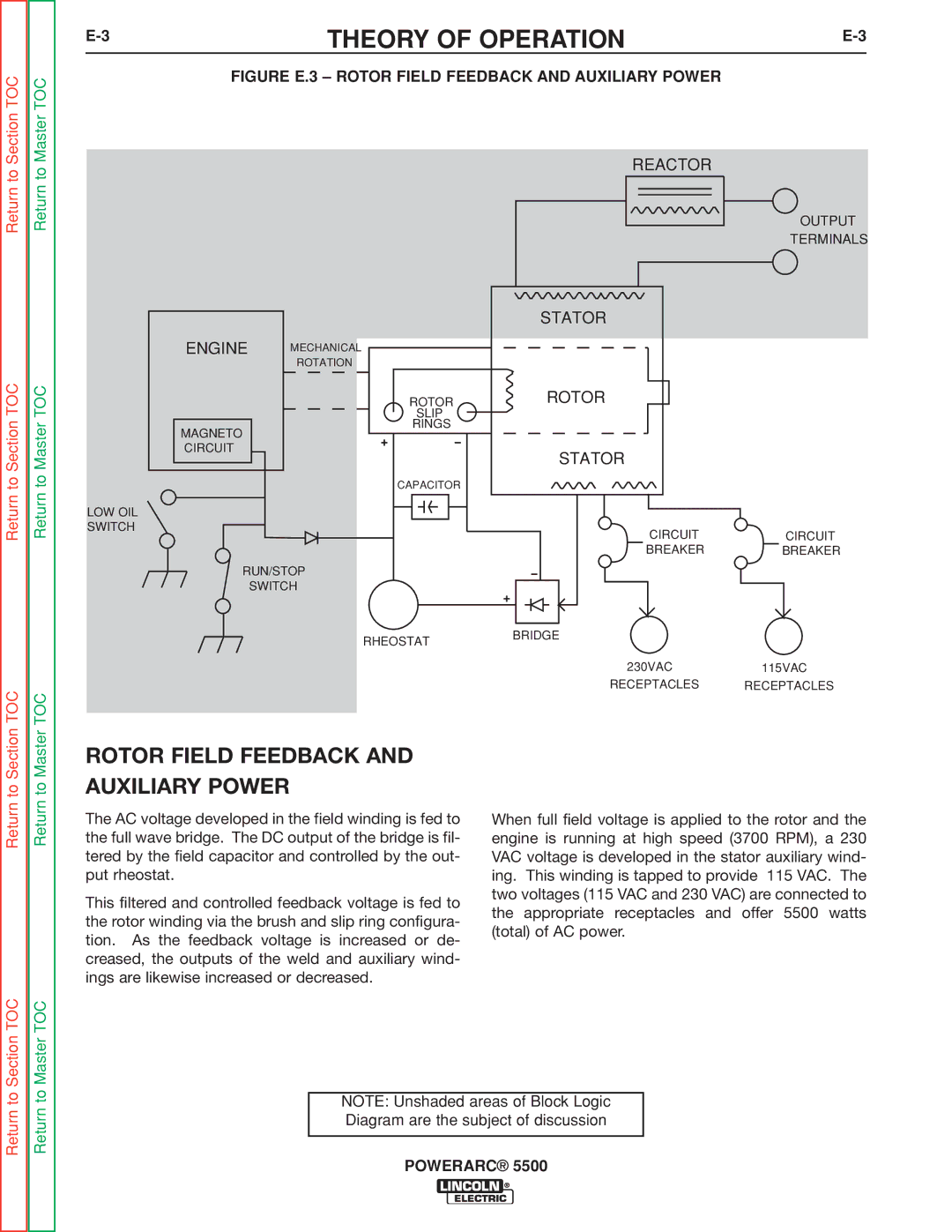
Return to Section TOC
Return to Section TOC
to Section TOC
Return to Master TOC
Return to Master TOC
to Master TOC
THEORY OF OPERATION | ||
| FIGURE E.3 – ROTOR FIELD FEEDBACK AND AUXILIARY POWER |
|
|
| REACTOR |
|
|
|
| OUTPUT |
|
|
| TERMINALS |
|
| STATOR |
|
ENGINE | MECHANICAL |
|
|
| ROTATION |
|
|
| ROTOR | ROTOR |
|
| SLIP |
|
|
MAGNETO | RINGS |
|
|
|
|
| |
CIRCUIT |
| STATOR |
|
|
|
| |
| CAPACITOR |
|
|
LOW OIL |
|
|
|
SWITCH |
| CIRCUIT | CIRCUIT |
|
| ||
|
| BREAKER | BREAKER |
RUN/STOP |
|
| |
| SWITCH |
|
|
| RHEOSTAT | BRIDGE |
|
|
|
| |
|
| 230VAC | 115VAC |
|
| RECEPTACLES | RECEPTACLES |
ROTOR FIELD FEEDBACK AND
AUXILIARY POWER
The AC voltage developed in the field winding is fed to the full wave bridge. The DC output of the bridge is fil- tered by the field capacitor and controlled by the out- put rheostat.
This filtered and controlled feedback voltage is fed to the rotor winding via the brush and slip ring configura- tion. As the feedback voltage is increased or de- creased, the outputs of the weld and auxiliary wind- ings are likewise increased or decreased.
When full field voltage is applied to the rotor and the engine is running at high speed (3700 RPM), a 230 VAC voltage is developed in the stator auxiliary wind- ing. This winding is tapped to provide 115 VAC. The two voltages (115 VAC and 230 VAC) are connected to the appropriate receptacles and offer 5500 watts (total) of AC power.
Return to Section TOC
Return to Master TOC
NOTE: Unshaded areas of Block Logic Diagram are the subject of discussion
